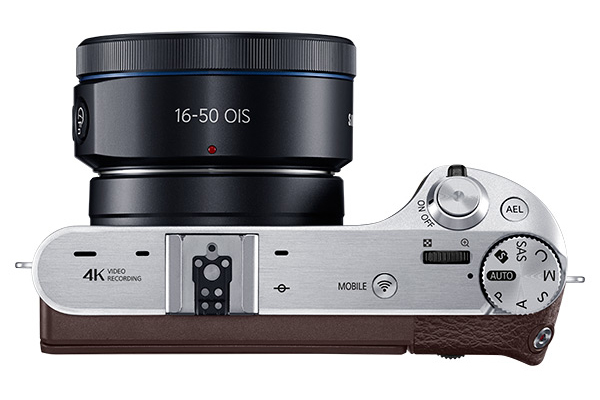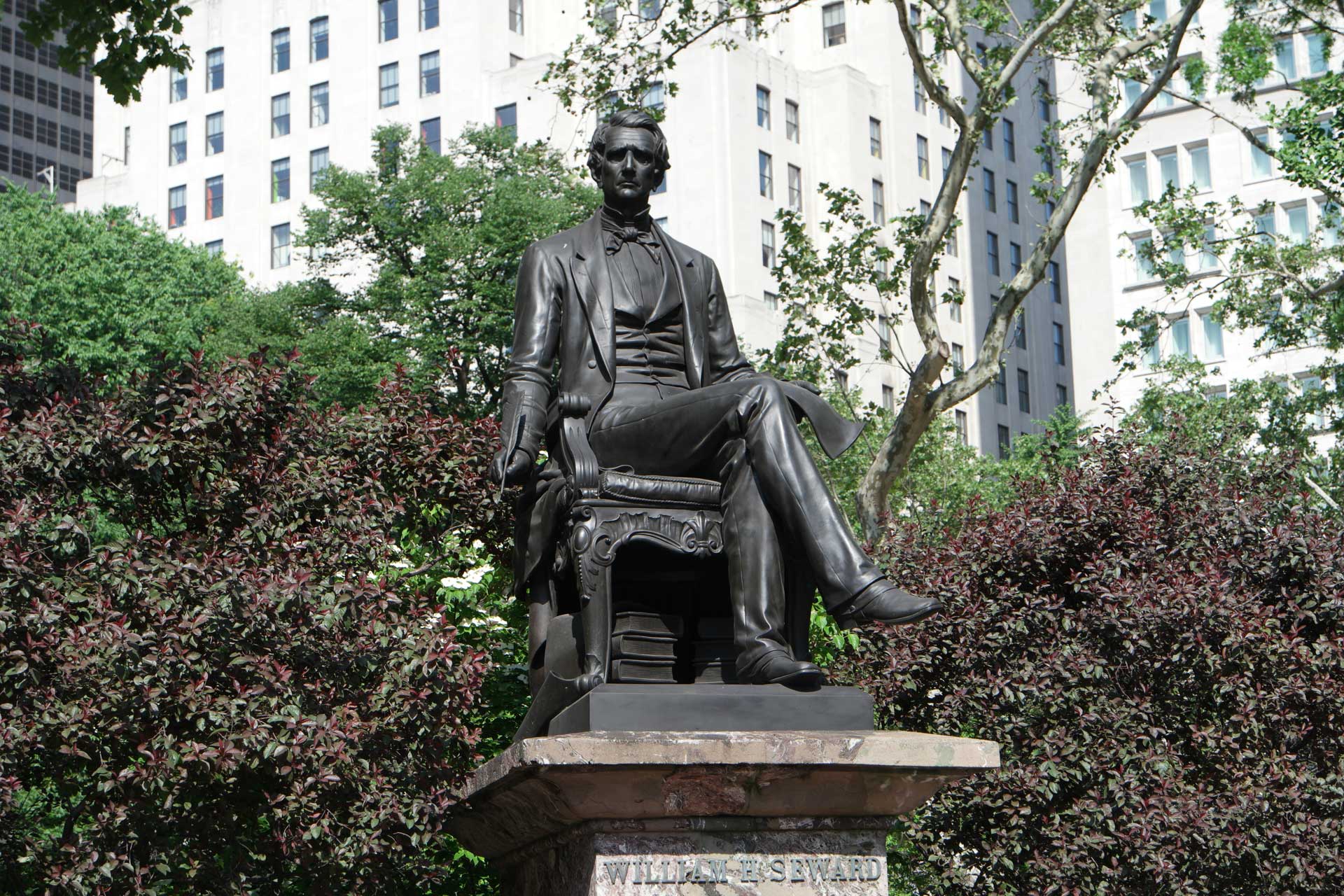Tom's Guide Verdict
Samsung's new mainstream mirrorless camera has a handsome design and takes good-looking photos, but doesn't beat the rival Sony a6000.
Pros
- +
Stylish, ergonomic design
- +
Gorgeous flip-up OLED touch screen
- +
Intuitive, smartphone-like controls and menus
- +
True-color reproduction, Ultra-HD and 4K video capability.
Cons
- -
Weak dynamic range obscures detail in shadow areas
- -
Autofocus less consistent than rival Sony a6000's
- -
No built-in flash, and included external unit adds bulk
- -
Videos in H.265 format require transcoding to view or edit.
Why you can trust Tom's Guide

Who it's for: People who want a very user-friendly introduction to interchangeable lens cameras.
Samsung set a standard for mirrorless cameras in January 2013 with the NX300. This sleek, slightly retro slab of a camera with a great OLED touch screen and fast phase-detection autofocus was exotic for the time. But with subsequent advances by competitors such as Sony, the NX300 now looks dated — so much so that Samsung leapfrogged a model number to the NX500 ($700 list price, with lens) for the NX300's overdue replacement.
The exterior design and dimensions of the camera are nearly identical to those of the final version of the NX300, the NX300M. Samsung radically changed the interior, however, equipping the NX500 with the same 28.2-megapixel sensor and DRIMe Vs processor that power the pro-grade Samsung NX1 and enabling 4K video recording, faster autofocus and cleaner low-light photos, among other features. But Samsung has a tough competitor in Sony's Alpha a6000 — a high-performing mirrorless camera with virtually the same size, price and capabilities as the Samsung camera.
So the most important question is: How does the NX500 compare to the a6000? I shot with both cameras to find out.
Design: Sleek and comfortable
The NX500 easily beats Sony and other competitors for design. The main slab of the camera's body is about as thick as the a6000's (1.7 versus 1.8 inches), but is less boxy, making it seem smaller. This is especially true at the right-hand grip, where the body slightly widens in a gentle curve that my fingers naturally slid around. Controls such as the shutter button, power switch and control wheels hug close to the body, protruding just enough to easily reach, but not enough to snag on things or accidentally trigger. The Sony a6000 is blocky by comparison, with a chunky right-hand grip that looks like it was bolted on at the last minute.

The faux leather around the NX500's body (available in black, white or brown) may look like a gimmicky throwback, but it provides a comfortable surface that's soft to the touch and offers a sticky grip.
MORE: Best Mirrorless Cameras
At 1.2-inches, Samsung's new 16-50mm image-stabilized zoom lens (24-75mm full-frame camera equivalent) is less than half as long as the 2.6-inch 18-55mm model that came with the NX300 and NX300M cameras. That's short enough that the NX500 can squeeze into a coat pocket.

This is a motor-driven "Power Zoom." Turning the ring around the lens barrel activates the motor that moves the lens. The a6000's 16-50mm power zoom is almost identical. While I appreciate the compact size, I found it harder to precisely adjust the zoom. Especially frustrating was that, by default, the lens retracts when the camera goes to sleep, and doesn't return to its previous zoom position when the camera powers back on. To get around that, go into the menu, tap on Power Save, and select a long period of time. (It goes up to 30 minutes.) The camera will still "go to sleep" after a time (which you can also set) to conserve battery, but the zoom stays put.

Image quality: Very good, but not the best
The NX500 produces attractive images overall, especially in rich, true color. But when I compared them to the a6000's, I noticed that sharpness, contrast and shadow detail were a bit lacking. Dynamic range (range from darkest to brightest elements of a photo) was also narrower, with shadowy parts of images appearing darker and harder to make out. That was true regardless of whether I shot in the NX500's default mode or in its Smart Range+ mode, which is meant to enhance the dynamic range.
In terms of color rendering, the two cameras are nearly identical — which is to say, both are very good. This photo of flowers on Broadway, in the slight shadow of a building, shows accurate colors from both cameras.


The two cameras are also well matched in bright, consistent lighting, as in this photo from Madison Square Park.


Going inside the park, though, the differences in dynamic range appear, especially under the canopy of trees in this photo. The leaves and trunks appear much lighter and therefore more detailed in the a6000 photo. In addition, the white building in the center shows more detail in both the very bright area closest to the camera and in the shaded area farther back.


The a6000 defaults to Sony's dynamic-range-expansion mode, called DRO. But switching the Samsung into its similar Smart Range+ mode does very little to lighten up the shadows, as you can see below. I shot dozens of subjects in both modes for comparison and could scarcely find a difference.

The Samsung NX500 images also have weaker contrast than those of the a6000. You can see that in these two images of gnarled tree roots.


Unlike most cameras in this size and price range, the NX500 does not have a built-in flash. Samsung makes up for that absence by including a petite strobe that slides into the camera's hot shoe and is a bit stronger than built-in units such as the a6000's. This strobe provides plenty of fill-flash to compensate for the narrow dynamic range by brightening up shadow areas — so much, in fact, that you'll want to stand a few feet further back than you would with a similar camera like the a6000.

The Sony's weaker flash provided gentler, more natural-looking light, however.

The NX300's biggest weakness was poor quality at high light-sensitivity settings (ISOs). While the NX500 performs much better, it's still a bit disappointing compared to the competition.
That's a surprise, since Samsung touts the fact that the NX500 (along with the NX1) has the largest backside-illuminated, or BSI, sensor. BSI tech moves much of the wiring to the back of the sensor, allowing more light to reach the photosites (pixels) and providing better low-light images. It's de rigueur in smartphone cameras, whose tiny sensors need all the help they can get harvesting light, but getting the technology into a full-size camera sensor is quite a feat. However, BSI tech doesn't seem to have provided much benefit here.
MORE: Best DSLRs for Your Budget
Pixel noise (graininess) starts becoming noticeable at the relatively low ISO level of 1,000, but quality remains good up to ISO 1,600. Beyond this point, not only does noise become much more noticeable, but the overall color of the image also starts to change. In the photos below (from the roof of the Whitney Museum on a rainy night), the predominant gray of the scene starts shifting to a slight amber tone at ISO 3,200, which grows with each increase in ISO. By ISO 6,400, it looks as if I've fiddled with the camera's white balance, but in fact, I kept it in the auto setting for the entire range.

Speaking of white balance, the NX500 tends to overcompensate in low light, as seen in the photos below, both shot at ISO 3,200. At first, the Samsung image, at left, appears to have done a better job with the white stone of the columned bank-turned theater on Union Square. But the color of light was much closer to the amber tone of the Sony a6000's image, at right. The NX500 overdid the white balance by adding too much blue to counteract the amber tones. You can see that blue cast in the building to the left of the theater and in the windows of the buildings above.

The a6000 also shows less noise, visible in the capitals of the columns, which remain fairly crisp in the Sony's photo but are starting to get fuzzy in the NX500's picture.
Autofocus and Speed: Fast shooter
Though it packs the same internals as Samsung's pro-grade NX1 camera, the NX500 is not quite as fast, but it's no slouch, either. In place of the NX1's incredible 15 fps, the NX500 shoots at a still-brisk 9 fps. That's close enough to the Sony a6000's 11 fps that the cameras are basically on even footing.
In my tests, the NX500 fired off 14 photos at top speed before slowing down considerably for the next 14, and finally stopping completely to process them and empty the buffer. (I used a top-of-the-line Lexar Platinum II 200x Class 10 SDHC memory card.) Photographing swing dancers at an outdoor concert in San Francisco, I was able to get enough photos to capture nearly every move of twirling dancers, as this GIF shows.

I found the Samsung's autofocus to be a bit less reliable than the Sony's. Looking over dozens of photos (from both burst and individual shooting), I found the Sony images to be sharper on average. Still, both cameras have great autofocus for this range of camera.
MORE: Why Autofocus Is the New Megapixel
Video: A hassle to work with
The NX500 produces fine-looking video, not only in full-HD 1080p resolution, but also in the ultra-HD (3,840 x 2,160) format used by new TVs, as well as the official 4K (4,096 x 2,160) format used in digital theaters. Samsung tried to be even more forward-thinking by encoding video in the new H.265 codec. This has become the standard for ultra-HD TVs and will likely fully replace the H.264 (also called MP4) format that most other cameras (including those in phones) use today.
But for now, very few programs — players or video editors — can read H.265. So you'll likely have to convert it to good old MP4 using the Samsung Movie Converter software for Windows and Mac.
The program is stashed away on the NX500's internal memory. You'll have to attach the camera to your computer over USB and click on the iLauncher icon that appears in order to install the software.
Then, you'll have to drag all of your video files into the converter window and go have dinner, take a shower or watch a sitcom while you wait for your computer to crunch through the processor-intensive operation. It took my fairly zippy MacBook Pro (2.4GH Core i5 processor, 8GB RAM, 256GB SSD) 40 minutes to crank through about 11.6 minutes worth of videos.
This video from the swing concert looks plenty sharp and does a good job maintaining focus during both panning and the fast movement of dancers. It also captures pleasant audio from the band.
It's a worthy competitor to the same video, shot with the a6000.
Focus was weaker by lower light, however, as this clip from the New York subway demonstrates. The NX500 locks onto the easiest targets — the text on various signs — and never strays from that to the people who often dominate the frame.
Unlike the Sony a6000, the NX500 does not have face detection for shooting movies. I mentioned this to Samsung, and a representative said the company recommends using the tap-to-focus feature on the OLED screen. It's also possible to increase how quickly the camera jumps to another subject, by selecting AF Responsiveness in the settings menu and changing it from 0 to +1 or +2.

The NX500 is one of a small but growing number of cameras that support the higher video resolutions known as ultra HD and 4K. I viewed some ultra-HD clips I'd shot on a 65-inch UHD television and a laptop equipped with a UHD screen. The videos looked a bit sharper than the 1080p versions, but issues such as soft or wandering focus were still visible.
Ultra-HD video recording is limited to 30 fps, so movement is as fluid as with 1080/60p. The lower frame rate is a common trade-off in many cameras to provide enough bandwidth to support the higher resolution. The NX500 uses the center portion of its sensor for UHD and 4K recording, which has the effect of extending the telephoto capability. Keep this in mind before you press the Record button on the right rear of the camera, as it will suddenly provide a zoom-in view.
Interface and Controls: Very friendly
The NX500, and its siblings, have a modern-style interface that resembles a that of a smartphone. It's far more user-friendly and familiar looking than a typical camera interface.
After tapping the Menu button on the back of the camera, you can control everything else from the 3-inch, 720 x 480 touch screen by scrolling through and tapping on menu options. That carries over to shooting, as you can tap the screen to set a point for focus or exposure (or both) and even to activate the shutter. When reviewing photos, you can flick through them with a finger and pinch to zoom, instead of relying on button presses. The NX500 does still offer all those buttons, though, for those who prefer tactile controls.
MORE: DSLR vs. Mirrorless Cameras: Which Is Right for You?
The buttons include two control wheels on the right side of the camera (when viewed from behind) — one on top, within easy reach of the index finger, and one on the back, at the tip of the thumb. They sit nearly flush to the camera body, which makes them hard to accidentally bump, but still easy to turn deliberately. A button on the back of the camera labeled Fn and one on the side of the kit lens labeled iFn each brings up a unique on-screen menu for quickly adjusting key settings such as ISO, white balance, metering mode and aperture.
Wireless: Easier than most
Connecting a smartphone or tablet to a camera over Wi-Fi sounds great, but is always a hassle in real life. Samsung does a few things to make the process easier.
Rather than digging through menus, you just have to tap the silver button with the signature three-semicircle Wi-Fi symbol on the top of the camera. This gives you the option to either view photos or control the camera remotely using the Samsung Camera Manager app (different from the old Samsung Smart Camera app) for Android and iOS.
To use the app on an iPhone (like my iPhone 5) or Android phone without an NFC chip, you must first select the camera's Wi-Fi hot spot, then click Yes in a dialog box on the camera screen that asks if it's OK to connect. This is much easier than having to type in a Wi-Fi password on the phone.
With an NFC-equipped Android phone, like the LG G4 I used, I just tapped the phone to the bottom of the camera: once to start downloading the Samsung Camera Manager app from the Google Play store and install it on the phone, and another time to pair the devices.
From the mobile app, you can select photos to transfer over to your phone or switch into the Remote Viewfinder option, which provides several key settings including Mode (Auto, Manual, etc.), resolution of photos and videos, and flash settings. Here's where the electronic zoom comes in handy, as you can also control this feature using the app.
Bottom Line
The NX500 is a lovely camera in many ways. The slim, curvy design makes it not only attractive, but also easy to hold. The flip-up OLED touch screen is beautiful for setting up and showing off photos. Controls, especially the on-screen menus, are far more friendly than those of other camera brands.
The image quality is fine, overall, especially in bright, even lighting, but doesn't keep up with the king of this category, the Sony a6000. The NX500 matches the Sony a6000 on video quality, but not on autofocus. And the H.265-to-MP4 conversion is a hassle that could discourage people from even bothering to try.
The Samsung NX500 is wonderful to handle and very user-friendly. If you can get along with the Sony a6000's less attractive design, screen and menus, however, it will reward you with all-around better quality and performance than the NX500 can deliver.
- Best PC and Mac Photo Editing Programs
- How Many Megapixels Do You Really Need?
- How to Take Better Photos with a DSLR or Mirrorless Camera
Follow Senior Editor Sean Captain @seancaptain. Follow us @tomsguide, on Facebook and on Google+.
Sean Captain is a freelance technology and science writer, editor and photographer. At Tom's Guide, he has reviewed cameras, including most of Sony's Alpha A6000-series mirrorless cameras, as well as other photography-related content. He has also written for Fast Company, The New York Times, The Wall Street Journal, and Wired.

